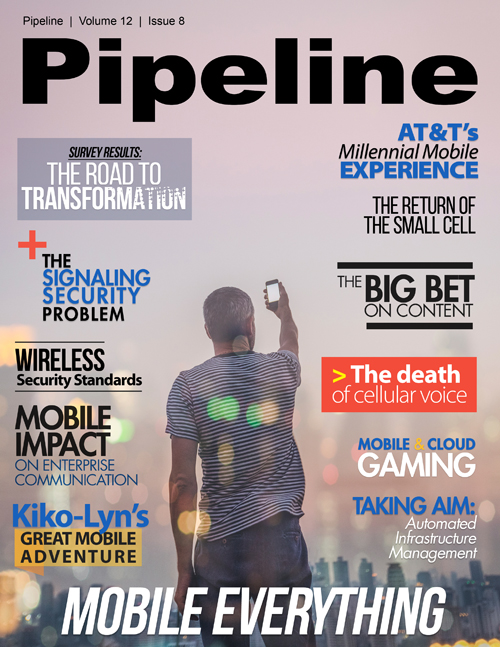AT&T's Millennial Mobile Experience

It’s 2016. The network is on demand. Your office is mobile. The cloud is highly secure. And your smartphone may even be surgically attached at this point – sometimes, it’s hard to tell. We’ve grown more dependent on technology for work and our personal lives. As the workforce becomes more mobile and connected, Millennials are surging into it. They’re fueling the growth of mobile workers. Our mobile workforce should see an increase from 96.2 million in 2015 to 105.4 million in 2020.
Fresh Eyes, Fresh Perspectives
Don’t be afraid of those who question you. Fresh eyes and fresh perspectives can help point out inefficiencies. What was once the best, can now be better. My teams – and, I’m guessing, many of your teams – are getting some fresh perspective from our Millennial colleagues. They now make up 27% of my colleagues at AT&T. By 2020, they could make up 50% of the U.S. workforce.
As tech-savvy as those of older generations may be, Millennials remain “digital natives.” They have never known a world without personal computers, cell phones and Internet. They rely on technology to fulfill basic social needs. Technology also gives Millennials the voice required to help create change.
About Ontology
Ontology Systems is revolutionising how telecommunication network operators get to know their networks. We replace expensive and fragmented views of your network with affordable,
comprehensive and dynamic panoramas so you can truly know your network.
Ontology Systems was founded in 2005 by Benedict Enweani (CEO) and Leo Zancani (CTO) to radically reduce the cost, risk and effort of joining up data in the IT and network estates of
Communication Service Providers (CSPs).
CSP day-to-day operations require interaction with a huge range of extremely high-variety data, and this interaction needs the data to be joined-up in order to present a cogent
picture of the business, its assets and operations to the processes that form the CSP.
Because of the wide variety, the cost of joining the data up represents a staggeringly high proportion of CSP operational costs, and the rigidity and brittleness of present-day
solutions to the problem fundamentally limit the agility of the business, making it hard to compete against ever more nimble emergent players.
Ontology Systems' products are based on its Ontology 5 graph-search data alignment and linking platform which uses new ways of representing and storing data to radically reduce the
cost and risk associated with joining up data from multiple, misaligned sources and understanding its quality.
Ontology's Intelligent 360 for Network Operators product line employs this capability to build a comprehensive end-to-end Dynamic Network Topology Model and use it to drive tools for
Network Troubleshooting, Customer and Infrastructure Navigation and Change Management.
Ontology Systems is proud to count some of the world's largest telecommunications companies amongst its customers, including a number of Vodafone Group companies, Telenor, Telkom
South Africa and Level 3 Communications. For more information, visit www.ontology.com
Millennials are calling for major changes in the workplace and looking to technology to make this possible. They want remote work options, flexible hours, and more intuitive communications tools. These desires are pushing their employers toward a more efficient, more intuitive – and more mobile – work experience.
With their fresh perspective, Millennials are spotlighting processes that have room for improvement. Whether pulling the team toward a cloud-based file storage and sharing system, campaigning for email or text voicemail delivery, or wondering why one system doesn’t work with another, they’re asking questions. And these questions point toward all-in-one, collaboration solutions.
Evolution of Collaboration
Our default business processes rely on using separate communication tools for each function. We hardly realize its inefficiency. Take a conference call, for example. One person takes notes in a Word document, shares it via email, and each participant breaks off to complete their tasks. At the follow-up, each person has to separately open the notes and check off what they’ve done. Then they can update the group. I’m exhausted just typing it… And this process can easily take up half – or more – of the meeting. It’s the default process, but it doesn’t have to be.
Without Unified Communications and Collaboration (UC&C) solutions, your working materials and your conversations may be disparate. Your files may be in your email, your shared drive, your conference call system, your colleague’s computer, your video conference rooms – they’re potentially everywhere. UC&C solutions make “picking up where you left off” possible. Your materials are available in the same place you “go” for calls, video chats, IM and email. And since file access functions unite with communications functions for many platforms, you can tie together documents with relevant communications context (like email chains, calendar reminders, IM conversations, and recorded video or voice calls).
When UC&C operates in the cloud, these capabilities are available on-the-go, just as accessible from a mobile device as from a computer. And when UC&C is fully adopted and implemented, a team’s collaboration will look very different than it did 10 years ago.



















